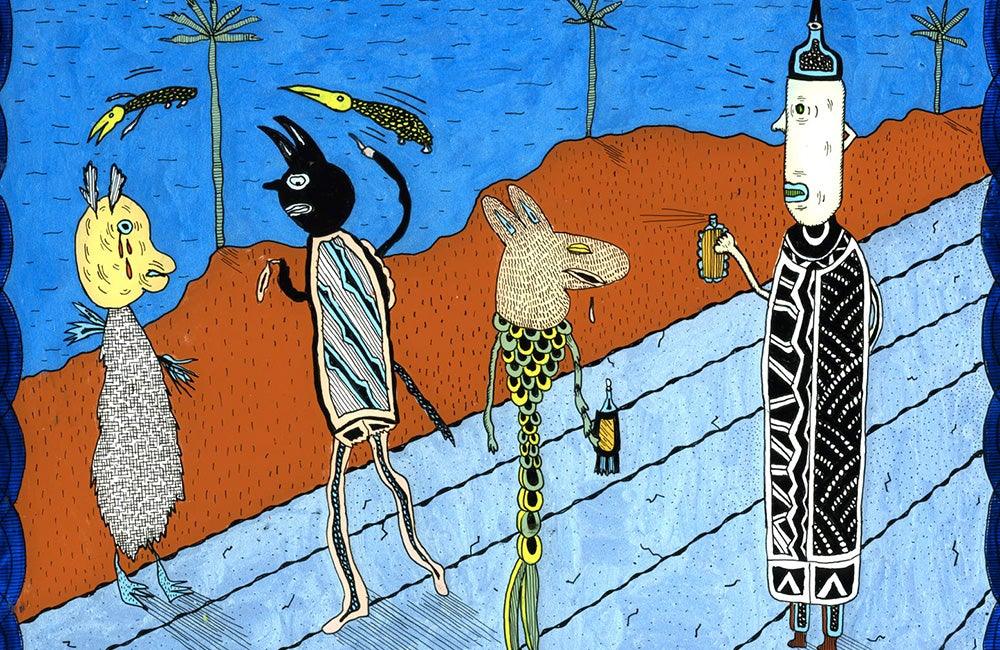First published: Spring 2013
Biographical details about the reclusive artist and autodidact, Mark Beyer, are limited to a few lines of facts and dates. Looking online, nothing further is to be gleaned beyond that which is already published. Beyer does not have a personal website. It appears there is a single known photograph of him in the public domain. The only interview of any length appeared in issue two of Escape conducted by Paul Gravett in 1983, when Beyer was in London for the Graphic Rap exhibition at the ICA. For nigh on 30 years this remains the only commentary made by the artist about his work. Much to my surprise and pleasure, I have been in contact with Mark who has been most forthcoming in response to my numerous email questions as well as providing images from all periods of his creative life.

Although Beyer’s reputation resides primarily within the comics genre, he has always painted, produced silkscreen prints and made soft dolls. Born in Bethlehem, Pennsylvania, at the height of the baby-boom era, Beyer was an only child. At the time, his parents rented an apartment, but within a year the family moved to a house in nearby Allentown, a city 90 miles east of New York. Both of his parents were children of the Depression years. His father served in the American Air Force during World War II, then went on to own a small construction company.
Beyer’s relationship with his parents was difficult, particularly with his father. By the age of 13, the frustration that existed between father and son erupted into violence. ‘We would get into an argument and I would start throwing things around the house. One night when I was 15, I really went berserk and started smashing furniture and breaking everything in the house. My father called the police who came out and wanted to arrest me, but eventually they left.’ The consequence of this outburst resulted in Beyer being sent to a special school about 80 miles from Allentown.

Finding himself in unstimulating surroundings, Beyer reverted to books as a way to occupy himself. ‘I would also draw little doodles in notebooks. It was mostly figurative work. Drawings of strange-looking people. I really didn’t think of what I was doing as art. It was just a way to kill time.’ Instead of turning inwards, he began to use his detention to externalise the angst of his restricted circumstances. After two years of authoritarian control, Beyer was given his freedom back. ‘It was 1968. The height of the hippie era.’
This is an article extract; read the full article in Raw Vision #78




